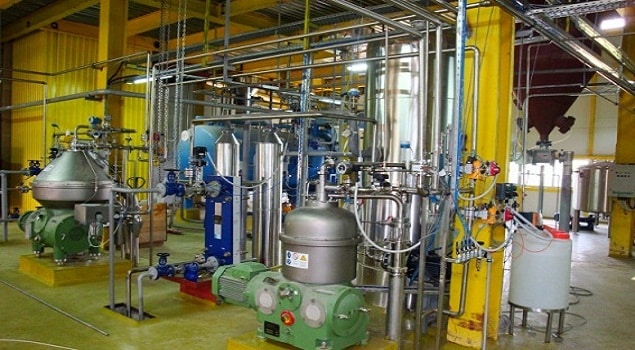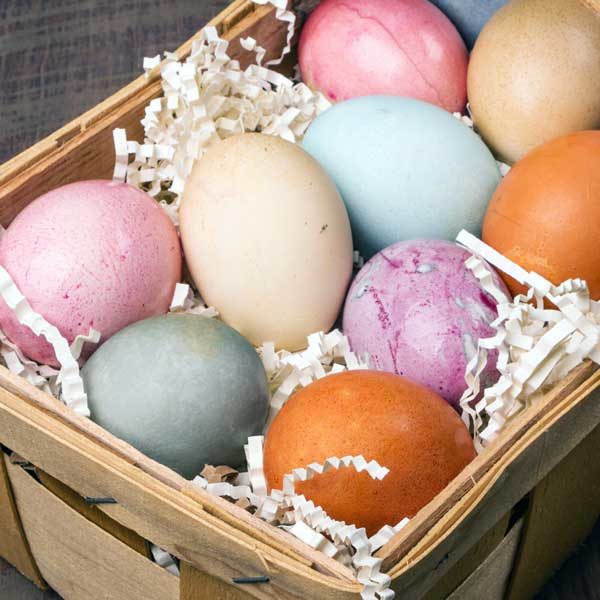This post may include affiliate links.
If you make a purchase, I'll earn a small fee at no extra cost to you.
Vegetable oil is not as healthy as the ads claim. Learn the surprising truth behind the chemical process used to make it, and what is a better choice.
You might be surprised to learn that our family doesn’t cook with vegetable oils of any kind.
“What?” you exclaim. “You don’t use vegetable oil? Seriously? You must be using canola oil then. That’s healthy, right?” Nope, I don’t use vegetable oil, canola oil, or soybean oil. In fact the only cooking oils I use are olive oil and coconut oil.
To learn why vegetable oil is unhealthy, we need to talk about how it’s made–it’s a 6-step process.
1. Harvesting
First, you need to harvest the extract the oil from the plant seed. For example, canola oil is made from a hybrid version of rapeseed–usually genetically engineered to resist the huge amounts of pesticides applied to them.
2. Pressing
The seeds are husked and cleaned. Then they are crushed, heated to high temperatures (up to 180F) and pressed with heat and friction to extract the oil from the seed pulp.
3. Hexane solvent bath
Yep, you read that right. The seed pulp and the oil are put in a hexane solvent bath to extract more oil. Hexane is produced by refining crude petroleum oil. According to the EPA, “Acute (short-term) inhalation exposure of humans to high levels of hexane causes mild central nervous system effects, including dizziness, giddiness, slight nausea, and headache. Chronic (long-term) exposure to hexane in air is associated with polyneuropathy in humans, with numbness in the extremities, muscular weakness, blurred vision, headache, and fatigue.”

4. Centrifuge
Next, the oil is separated from the seed residue in a centrifuge and phosphate is added. The residue that is collected is often used as animal feed. Ack.
5. Neutralization and bleaching
Now that the oil has been super-heated and treated with solvents, it’s called “crude oil.” It has a terrible smell and an awful color. This, of course, means even more processing. Any impurities in the oil will cause it to oxidize (spoil), so they are neutralized and drawn off with caustic soda (sodium hydroxide) or soda ash (sodium carbonate). Then the heated oil is treated with bleaching agents to remove any unwanted color.
6. Deodorization
This is the last step before bottling. Pressurized steam at temperatures of 500 degrees or more removes volatile compounds that cause the final product to taste or smell bad.
Now it’s ready to eat! Or you can add just two ingredients and make biodiesel. Anybody grossed out yet?
Vegetable Oil Alternative
Good question. Let’s compare how vegetable oil is made to the way Brandless’ Organic Virgin Coconut Oil is made. Then you can decide which you’d rather eat!
Ripe, certified-organic coconuts are picked and hand-shelled within a few days of harvest. The fresh, food-grade white coconut meat is then dried at a low temperature (not exceeding 131Fº) to remove moisture.
The dried coconut meat is then expeller-pressed to extract delicious virgin coconut oil. No further processing is required beside filtering, and no chemicals or high-heat (e.g. steam deodorization) treatment is used.
That’s it! The oil is ready for us to use–in cooking, for homemade remedies, natural body care, and more.





I lived in the Philippines for 3 yrs back in the early 80s (Air Force). I know the area in the post. I watched men scurry up coconut trees to cut a coconut. He hurried back down, hacked the end of with his machete and gave it to me to drink the milk!
Thanks for the great information. We are trying to stay away from oils as well. We planted a whole field of sunflowers this year in hopes we have enough to press sunflower oil.
I use grape seed oil. What do you know about that? Is it better than canola and others?
What about avocado oil?
Thanks for pointing that out. I’d never heard of avocado oil before! Yes, it can be cold-pressed like coconut oil.
Are sunflower and safflower oils made the same way? I was under the impression that they were made in a similar way to olive oil. Their use should still be limited due to the omega 6 content, though.
They are. Wellness Mama has done tons of research on this–you might like to read her article too. http://wellnessmama.com/2193/why-you-should-never-eat-vegetable-oil-or-margarine/
I do get sunflower oil, b/c it is cold-pressed, expeller, organic, and local. I will reconsider my purchasing of safflower-oil based mayonnaise at a significant up charge, though, and attempt to make it with olive oil again.
It was my late partner who told me about cooking oils and got me started using Olive Oil. Now I’m glad he did. Thanks for the info! 🙂